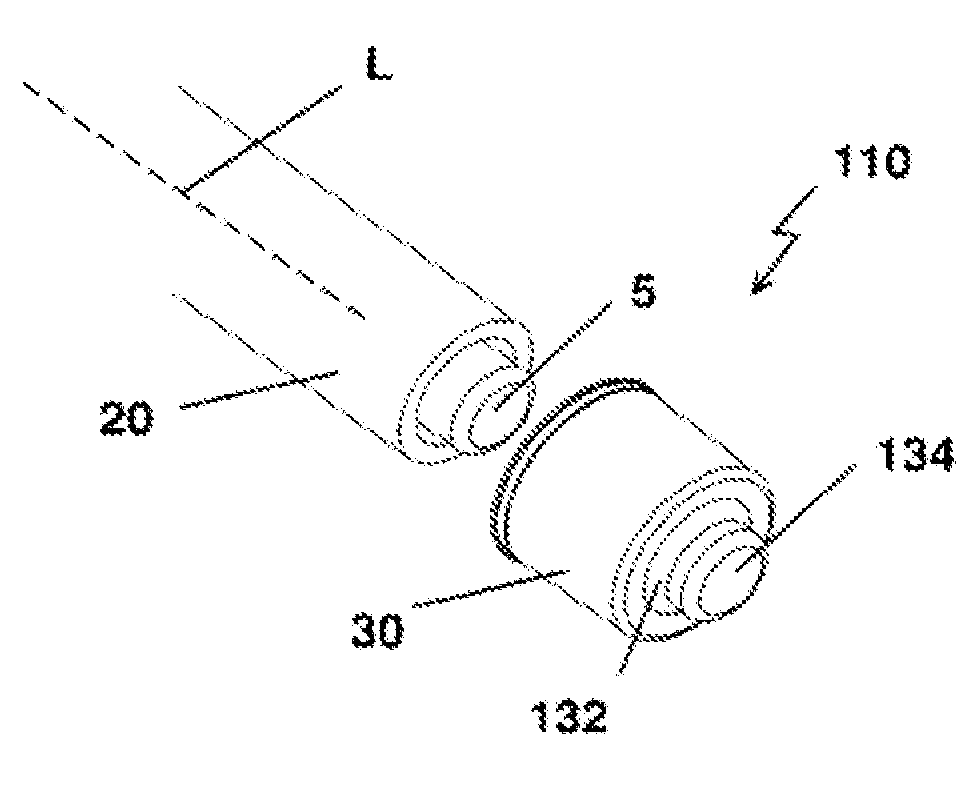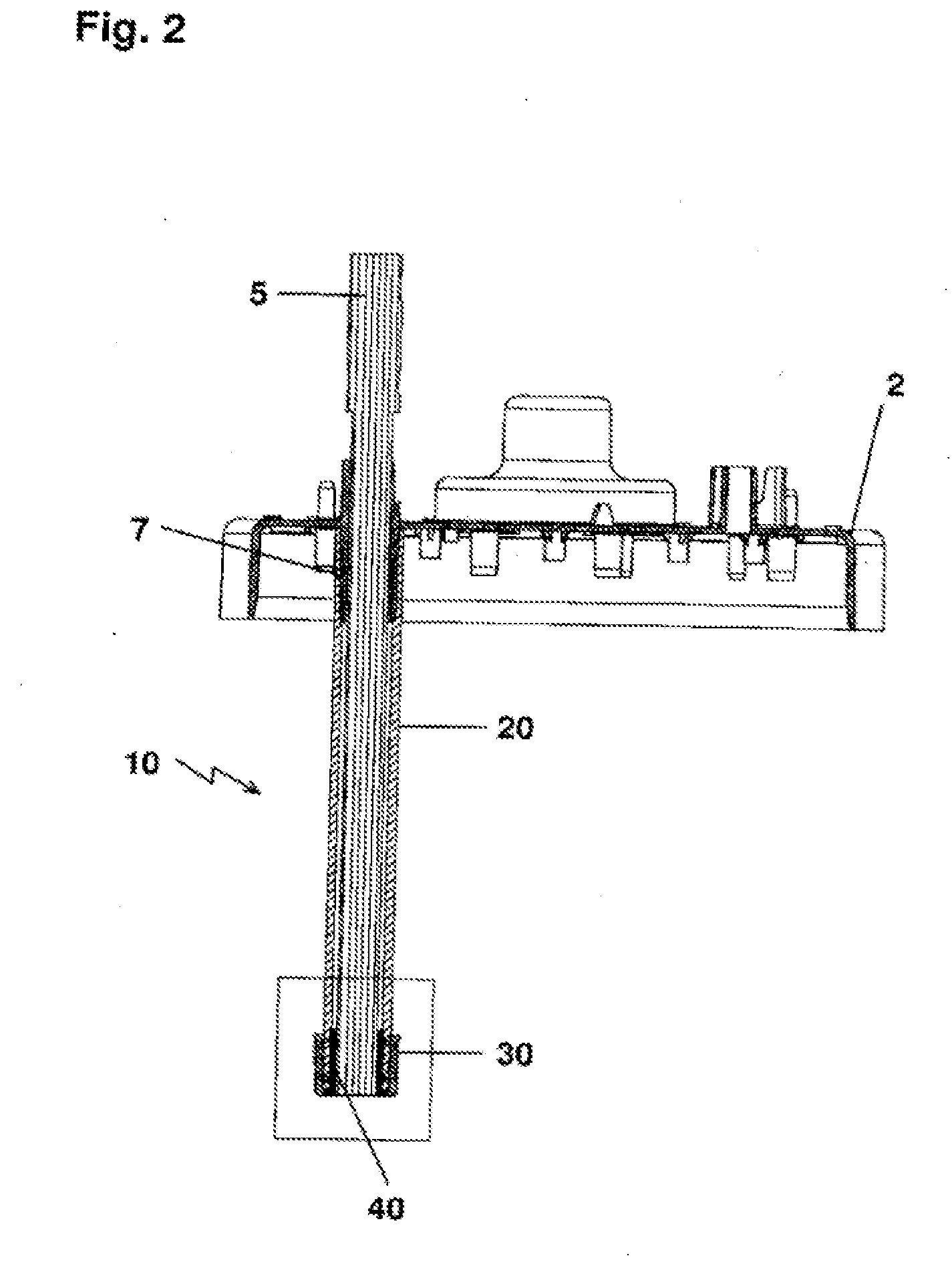Sensor adapter, method for the manufacture thereof, method for the use of a sensor in this sensor adapter and bioreactor with this sensor adapter
a sensor adapter and sensor technology, applied in the field of sensor adapters, can solve the problems of distorted oxygen concentration measurement in the bioreactor, destabilization, and insufficient sealing of the interior of the connecting cone from the surroundings
- Summary
- Abstract
- Description
- Claims
- Application Information
AI Technical Summary
Benefits of technology
Problems solved by technology
Method used
Image
Examples
Embodiment Construction
[0044]The present invention comprises a sensor adapter 10, which is used for positioning a sensor 5 in a medium 9 that is to be investigated. The sensor adapter 10 accommodates the sensor 5, so that the medium, which is to be investigated, does not come into contact with the sensor 5. On this basis, the sensor 5 can be inserted, positioned, removed and exchanged noninvasively with respect to the medium that is to be investigated.
[0045]The inventive sensor adapter 10 preferably is used in combination with a bioreactor R, similar to that shown in FIG. 1. The bioreactor R is known as a one-way system and as a multiway system. It consists of a container 1 with a cover 2. Such bioreactors R are described, for example, in EP 09006409 and U.S. 61 / 177,389 which are incorporated in their entirety herewith by reference.
[0046]The bioreactor R comprises different components, which are attached to the cover 2. These components include, for instance, a stirrer 3, pipelines 4 for liquids and / or ga...
PUM
| Property | Measurement | Unit |
|---|---|---|
| Fraction | aaaaa | aaaaa |
| Fraction | aaaaa | aaaaa |
| Fraction | aaaaa | aaaaa |
Abstract
Description
Claims
Application Information
 Login to View More
Login to View More - R&D
- Intellectual Property
- Life Sciences
- Materials
- Tech Scout
- Unparalleled Data Quality
- Higher Quality Content
- 60% Fewer Hallucinations
Browse by: Latest US Patents, China's latest patents, Technical Efficacy Thesaurus, Application Domain, Technology Topic, Popular Technical Reports.
© 2025 PatSnap. All rights reserved.Legal|Privacy policy|Modern Slavery Act Transparency Statement|Sitemap|About US| Contact US: help@patsnap.com



